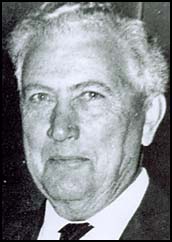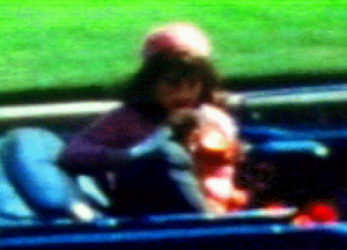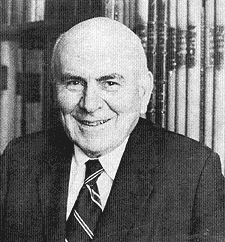Alex Constantine - November 21, 2014
At the time, Greg Rodriquez didn't think twice when a Japanese doctor held a feather under his nostrils. And Frank James was only a little suspicious when his captors ordered him to take the bodies of specific fellow prisoners to a table for dissection.
But Herman Castillo knew something was terribly wrong when men in white coats stuck needles in his arms, threw him into a tiny wire cage and said, ''Now you're a carrier for life.''
Now, a half-century after Japan's surrender ended World War II, a declassified U.S. military file provides for the first time clear evidence that American intelligence agents didn't pursue abundant leads indicating U.S. prisoners of war in Manchuria were the victims of grotesque biological warfare experiments.
The file contains at least four documents from independent intelligence sources alleging that American prisoners were used as human research subjects. While the assertions are not proof this occurred, the file clearly shows that U.S. military officers maneuvered to suppress the reports. Their unwillingness to pursue the allegations apparently stemmed from a secret deal granting the Japanese immunity from prosecution in exchange for tissue samples and reports on human experimentation that might help give the U.S. a germ warfare advantage over the Russians.
The Mercury News obtained the 137-page counterintelligence file from Rodriquez's son, Greg Jr., 46, a Washington, D.C.-based researcher who recently discovered it at the National Archives. It had been declassified two years ago after a Japanese researcher's Freedom of Information Act request.
The documents focus on Unit 731 of the Japanese Imperial Army. Western historians believe the unit killed at least 200,000 Chinese soldiers and civilians with ''field tests'' of germ warfare that included giving children chocolate laced with anthrax, an infectious and often fatal disease.
Historians have documented that the Japanese routinely used Chinese, Russian and Korean POWs for medical experiments. The live test subjects were called maruta -- ''logs of wood'' -- and were injected with bubonic plague, typhoid, cholera, syphilis and other diseases. The prisoners were often dissected alive without anesthesia to see the effect of the diseases on their vital organs.
Many of the 1,500 American soldiers who were captured in the Philippines and taken to Mukden, Manchuria, have long suspected that they, too, were victims of germ-warfare experiments. Dozens of Mukden survivors contend that Japanese and U.S. officials have covered up the experiments on Americans for 50 years.
Both governments, however, have maintained there is no evidence to support such an allegation -- a position they still hold.
Evidence to the contrary is found in a file from the military's counterintelligence corps of the Supreme Commander of Allied Powers, headed by Gen. Douglas MacArthur. Its most damning documents make it clear that U.S. intelligence agents not only covered up war crimes against Americans, but also aggressively protected the architect of those crimes, Lt. Gen. Shiro Ishii.
''What fascinates me the most about this file is that there was no visible interest expressed in following up about the Americans,'' said historian Gavan Daws of Honolulu, an authority on Allied POWs in the Pacific, who was recently shown the document by the Mercury News. ''And it's clear from the file that there is a wish and a directive that nothing should be done.''
Sheldon Harris, author of ''Factories of Death,'' a 1994 book on Japanese biological warfare, agreed. ''It's almost assumed that Americans were victimized, and it didn't bother them in the least,'' Harris said of the intelligence agents. ''This file brings a lot of things together. It's really a shameful story.''
At the request of Nationalist Chinese officials who heard about ''bacteriological experiments upon Chinese and Americans as human guinea pigs,'' the U.S. counterintelligence corps prepared a report on Ishii, the head of Unit 731, according to a Sept. 6, 1947, memo.
The document makes it clear that a high-level U.S. intelligence officer, Col. Philip Bethune, quashed the report after informing his agents that it involved ''a Top Secret matter.''
The agent who wrote the memo, identified only by the initials WSC, also wrote that ''Col. Bethune desires no further action be taken in this case. No further action was taken.''
The newly discovered file dovetails with an April 18, 1947, report from the legal section of Gen. MacArthur's headquarters, specifying that the Unit 731 investigation was ''under direct Joint Chiefs of Staff order.''
''Every step, interrogation, or contact must be coordinated with this section,'' said the report by Lt. Neal Smith. ''The utmost secrecy is essential in order to protect the interests of the United States and to guard against embarrassment.''
The file also corroborates the story of Dr. Murray Sanders, a former lieutenant colonel who advised Gen. MacArthur on biological warfare. In 1985, Sanders claimed he recommended to MacArthur that he trade the data for immunity for Unit 731 leaders.
''I feel terrible about it,'' the 75-year-old Sanders told reporters shortly before his death. He said he didn't know at the time that the Japanese had experimented on humans. ''If we had known they used human guinea pigs, I doubt we would have given immunity,'' he said.
Critics dismissed Sanders as a senile old man who was misrepresenting his role in history.
Rodriquez's story
Forty years of hospital visits
GREG Rodriquez Sr., who only later found out that passing feathers under the nostrils of prisoners was a common way of exposing them to germs, is so angry at Gen. MacArthur that he can barely talk about it.
''I can't tell you in words what I think of him,'' said Rodriquez, 72, of Henryetta , Okla. ''First he abandoned us in the Philippines, then he abandoned us to a lifetime of uncertainties.''
For four decades, Rodriquez had been going to Veterans Administration (now Veterans Affairs) hospitals several times a year with inexplicable fevers, one of which reached 106 degrees. Not until 10 years ago did a private physician tell him he had excessive levels of typhoid bacilli in his blood.
Joseph Gozzo, 76, became alarmed when he and his fellow prisoners had glass rods shoved up their rectums.
''Damn right I remember,'' said Gozzo, a former aviation engineer who lives in San Jose. ''And I can't believe our government let them get away with it.''
None of the survivors interviewed has been able to establish a direct connection between POW experience and subsequent health problems. But their suspicions run deep -- and their stories are compelling.
''We were just pawns,'' said Frank James, 73, a retired Lockheed auditor from Redwood City. ''We always knew there was a cover-up.''
In 1986, James told a House of Representatives subcommittee that the captured Americans, along with several hundred British and Australian soldiers, were met in Mukden on Nov. 11, 1942, by a team of Japanese medical personnel wearing masks. They sprayed liquid into the prisoners' faces and gave them injections.
By the end of the winter, about 250 Americans had died, and their bodies were stacked like cordwood. When spring came, the 80-pound James was one of two POWs ordered to work with a Japanese medical team, picking up the half-thawed bodies.
The prisoners were told to dump some in a mass grave and take others, identified by tags on their toes, to a table. James watched a medical team dissect the bodies and place their vital organs in wooden boxes, clearly labeled with POW numbers.
Later, he said, the medical team returned to Mukden to measure various parts of the prisoners' anatomies with calipers. The team photographed each POW and demanded information about their ethnicities.
Herman Castillo, 75, remembers being in the camp hospital with an injured back when ''these Japanese fellows in white coats'' arrived and took him to the Japanese side of the camp for an examination. The men probed his rectum, gave him some shots and examined him with instruments he had never seen before. Then he was led to a wire cage.
When one captor made the comment about his being a ''carrier for life,'' Castillo was frightened.
''A carrier of what?'' he asked. But the man didn't answer -- and Castillo was left isolated in the case for three weeks.
Now a retired mechanical engineer from Clawson, Mich., Castillo has wondered for more than half a century what he is carrying in his blood. Doctors have found nothing.
But other POWs weren't so lucky.
Max McClain, 73, will never forget the day in November 1943 he and bunk mate George Hayes lined up for injections. Two days later, Hayes told him, ''Mac, I don't know what those SOBs gave me, but I feel like crap,'' he said.
When he got back that night, the ''boys at the morgue'' were cutting his friend up, the Orlando, Fla., resident said.
Art Campbell, another of the roughly 200 Mukden survivors still living, said he saw unmistakable evidence of germ-warfare experimentation.
First, there was the tooth powder that came in different-colored cans. Guards recorded the color every POW was using.
''They didn't give a damn if we looked like skeletons or were dying of dysentery, but they did make sure we brushed our teeth every day,'' he said.
Then there was the time in early 1943 the guards had everyone line up to get oranges. ''They had a ledger with all the POW numbers, and when you got your orange they checked it off,'' said Campbell, 75, a retired machinist from Rockwall , Texas. ''You just know there were germs in those oranges.''
About a week later, he and eight of the camp's healthiest prisoners were put in a special ward where they were tended to by a team from outside the camp. For three months, each got a shot about every third day.
''They told us it was horse urine that was high in vitamin B,'' said Campbell, who thinks the Japanese teams became frustrated because the U.S. military had vaccinated GIs for almost every disease under the sun.
''I think they thought we'd all be dead the first year,'' he said. ''We fooled them.''
Injections
Bubonic plague bacilli
THE FIRST suggestion that Americans were being experimented upon appears in the counterintelligence file in a Dec. 3, 1945, memo containing information from informant 80-11. The informant claims that Ishii and his assistants injected ''bubonic plague bacilli into the bodies of some Chinese in Harbin, China and some Americans in Mukden, China as an experiment.'' The U.S. agent who received the report indicated that he considered the information reliable.
Less than two weeks later, agents received a memo from the Japanese Communist Party -- a key information source for U.S. intelligence agencies after the war -- saying that Ishii had built a large germ-warfare laboratory near Harbin and that ''Americans citizens captured during the war'' were among the subjects.
Less than a month later, Ralph Teatsorth, Tokyo bureau chief for United Press , reported to a U.S. intelligence agent that Yoshio Shiga, the editor of the Japanese Communist newspaper Red Flag, had told him that ''experimenters under Ishii had inoculated American and Chinese POWs with bubonic plague virus during experiments.''
According to the agent's memo, Shiga also told Teatsorth where Ishii was reportedly living in Japan and offered to find him. Agents asked Teatsorth not to write any stories about it. He said he wouldn't, the memo said.
A brief hearing
Immunity tale aired
FOR MORE than three decades after the war ended, the story of Unit 731 remained one of its best-kept secrets. Then, in October 1981, John Powell, who once published a Shanghai magazine, wrote in the Bulletin of Atomic Scientists about documents suggesting U.S. military leaders felt that obtaining the germ-warfare data outweighed the advantages prosecuting Ishii and his cohorts at the Tokyo War Crimes Trials .
The documents showed that U.S. military planners had worried that the Soviet Union was far more advanced than the United States in developing biological warfare. U.S. military leaders felt that the Japanese tests -- however horrific -- were invaluable because they involved human experimentation that would never be allowed in the United States.
Coupled with the assertions of Dr. Sanders, MacArthur's aide, Powell's disclosures eventually led to the 1986 congressional hearing at which Frank James testified. It was called by Pat Williams, D-Montana, Greg Rodriquez Jr.'s congressman.
At the hearing, the chief archivist for the U.S. Army testified that there were no records to indicate Americans had been the victims of wartime experiments. The official, John Hatcher, also told incredulous members of Congress that the Army had sent most of its information back to Japan in the late 1950s and never made copies.
But James was the only Mukden survivor invited to testify, and Rodriquez Jr. said he was told by a congressional staffer that if he mentioned MacArthur he would be ''gaveled down.''
The hearing ended after half a day, and Congress never again took up the issue.
Irony of it all
U.S. knew more than Japan
ONE OF the great ironies of the data-for-immunity deal was that the Americans never got much out of it, said Harris, a history professor emeritus at California State University, Northridge. It turned out that the United States was far more advanced than Japan in biological warfare research, he said.
Ishii and his cohorts got the better part of the deal. Unlike many Germans who were tried for their experimentation on humans, the Japanese germ-warfare researchers became some of Japan's most prominent citizens -- university presidents, heads of medical centers. Lt. Col. Ryoichi Naito, Ishii's right-hand man, founded Green Cross, one of Japan's top pharmaceutical companies. Other Unit 731 leaders joined him there.
The U.S. government's policy regarding comment on Unit 731 has been to ''let the historical record speak for itself,'' said Norman Covert, the government's chief spokesman on the matter for the past 15 years.
''We don't use the term "coverup' -- that's a modern term,'' said Covert, who is based at Fort Detrick, Md., home to a U.S. germ-warfare program until 1969. ''But we don't deny that some things were kept top secret and away from the public's eye for security reasons.''
As to the issue of whether Americans were used as Unit 731 guinea pigs, Sam Grizzle, deputy information director at the Pentagon, said Friday: ''Nobody has ever come up with solid evidence. But that doesn't mean we're not interested in seeing it.''
Grizzle conceded that much of the material that could provide proof that Americans were experimented on by Ishii's unit is now in Japanese archives. ''And Japan doesn't have a Freedom of Information Act like we do,'' he said.
But the Mukden survivors have found a new ally -- Jesse Brown, the secretary of veterans affairs, who recently fired off a letter to Defense Secretary William Perry, asking him to finally seek the truth about Mukden.
If the former prisoners' charges are true, Brown said, ''we must not only express our indignation . . . but take immediate and thorough steps to properly reach out to the survivors.
''I hope you would agree with me that it would be equally outrageous for the government to modify or temper its actions to spare former officials and current interests the shame associated with the perpetration of these acts and efforts that may have been taken to conceal them.''
File provided by Global Alliance for Preserving the History of World War II in Asia






